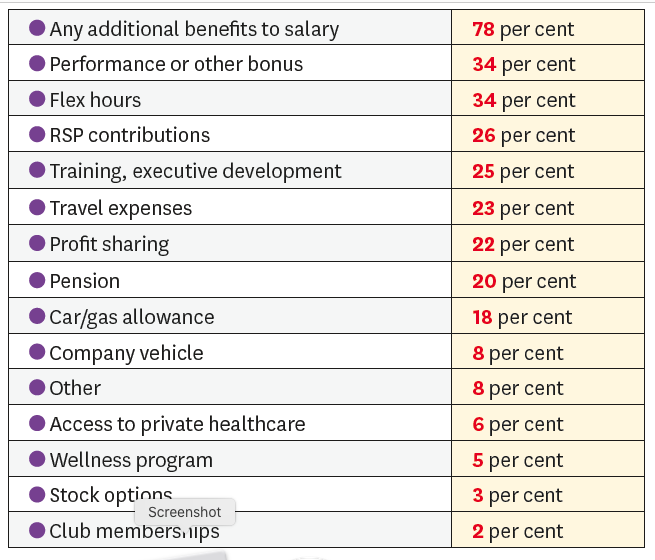
Focus: Women in manufacturing
August 24, 2021
By
Maryam Farag


Photo: © dusanpetkovic1 / Adobe Stock
Women represent one of the largest pools of untapped talent for manufacturers, and closing the manufacturing’s gender gap is the key to closing the skills gap that has limited businesses’ ability to evolve and expand. Not to mention that research shows that gender diversity benefits manufacturing firms by creating a culture that improves their ability to innovate and grow.
In this survey, the number of female respondents is significantly lower than males; 16 per cent vs 84 per cent male.
According to the survey results, 95 per cent of female respondents stated they are working for a full-time manufacturing organization. Two per cent stated they are 25 years of age or under; nine per cent stated they are 26 to 36; 20 per cent stated they are 36 to 45; 35 per cent are 46 to 55; and 30 per cent are 55 to 65.
Women in manufacturing overall are younger than men with 31 per cent under 45 years old. This compares to 18 per cent of men; 66 per cent of women versus 44 per cent of men are under 55.
Let’s start by the main theme of this survey:
SALARY
Gross salary
Of the female respondents, 36 per cent said their gross salary is $75K or less; 43 per cent said it is $75 to $110K; and 21 per cent said they make over $110K, meaning the average gross salary is $85,112.
Salary projection
Seventy per cent said they expect an increase in their salaries in the next three years. Breaking it down, 38 per cent project a one-to-three-per cent increase; 14 per cent a three-to-five-per cent increase; 13 per cent a five-to-10 per cent increase, and six per cent an over 10 per cent increase.
Two per cent of the respondents project a decrease in their salaries in the next three years. And 28 per cent said there would be no change.

The following data indicates additional benefits to their salary:
EDUCATION
Type of degree
A total of 37 per cent of females said they received a bachelor degree, nine per cent other masters, two per cent an MBA, two per cent a professional degree (medical, law) and seven per cent a Ph.D. However, 43 per cent stated otherwise.
Highest level of education
Only 17 per cent of females stated that high school or lower was their highest level of education, five per cent a trade/technical diploma, 38 per cent a college diploma, two per cent a CEDGEP, and 39 per cent a university degree.
COVID-19 IMPACT
There is no doubt that COVID-19 altered employment situations, statuses, and compensations in the past year. However, 42 per cent of the female respondents stated there was no change in their employment situation in the past year, and none changed jobs within the same organization. Further, 32 per cent were in the same job with the same salary, but with increased responsibility due to reduced staff. And nine per cent moved to a new organization.
Six per cent had their hours reduced, six per cent were promoted, two per cent were laid off because the company closed down, and two per cent started new job sharing. Three per cent were given a new role because their old position at the company was eliminated, and three per cent were laid off from the organization. Eight per cent stated otherwise.
Of respondents, 26 per cent of females stated the change in their employment status was because of COVID-19; 25 per cent said it was not because of COVID-19, three per cent were not sure, and 46 per cent had no change in their employment status.
Of females, 33 per cent stated that COVID-19 affected their compensation. Three per cent positively, 30 per cent negatively; 67 per cent stated their compensation wasn’t affected by COVID-19.
EMPLOYMENT SITUATION
Role in company
Nearly three-quarters (73 per cent) of females stated they have a management role in the company only, five per cent have controlling ownership stake in the company and a management role, six per cent have an equal partnership stake in the company and a management role, three per cent have a minority ownership stake in the company and a management role. And 14 per cent stated otherwise.
Title
Thirty per cent of females stated that “administrative management” best approximates their title/role. Followed by production/operations manager (12 per cent), director (nine per cent), quality assurance manager (nine per cent), vice-president (five per cent), owner/partner (six per cent), safety manager (six per cent) and CEO/president (six per cent).
EXPERIENCE
Experience-wise, 18 per cent of females said they have 10-or-less years of experience, 45 per cent have 10-25 years, and 30 per cent have over 25+ years, the average years of experience is 20.1.
On a closer scope, 39 per cent have 10-or-less years of experience in their current company; 35 per cent have 10-25 years, and 18 per cent have over 18 years, with average years of experience in their current companies at 14.
In addition, 53 per cent stated they have 10-or-less years of experience in their current job; 29 per cent have 10 to 25, and eight per cent said over 25.
WORK TYPE
According to the survey, the average percentage of hours worked per week by the female respondents is 44.8. The following data shows the type of organization they work for, based on the major products or services at the location:
• Fabricated metal product
(17 per cent)
• Miscellaneous manufacturing (15 per cent)
• Plastics and rubber products (eight per cent)
• Wood product (eight per cent)
• Paper manufacturing
(eight per cent)
• Food manufacturing
(six per cent)
• Aerospace product and parts (six per cent)
• Chemical (six per cent)
• Motor vehicle parts
(five per cent)
• Durable goods industries (five per cent)
• Electrical equipment
(three per cent)
• Furniture and related product (three per cent)
• Machinery (two per cent)
• Petroleum and coal product (two per cent)
• Beverage and tobacco product (two per cent)
• Clothing manufacturing
(two per cent)
• Leather and allied product (two per cent)
• Life Sciences (two per cent)
Therefore, bridging the divide will mean reshaping the way people think about jobs in manufacturing, educating them to the types of jobs that are available and helping them get the qualifications necessary to fill them. Put simply, the manufacturing industry is in a state of reinvention, and educating and empowering women will be critical to the future of the industry.
__________________
Maryam Farag is the Associate Editor of Machinery and Equipment MRO magazine, Food and Beverage magazine, and Plant Magazine, Annex Business Media. Reach her at mfarag@annexbusinessmedia.com


